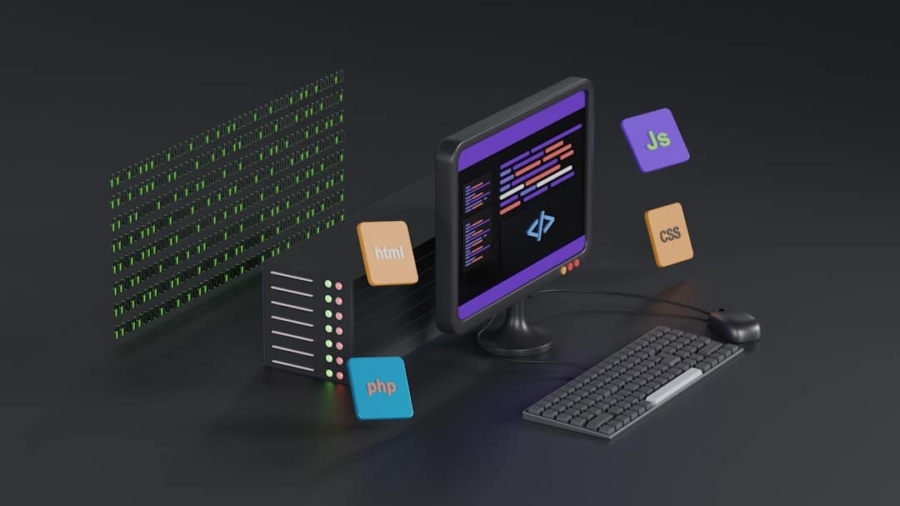The landscape of education has undergone a significant transformation in recent years, largely driven by the advent of educational technology (EdTech) platforms. These digital tools and resources have revolutionized the way educators deliver content and how students engage with learning materials. EdTech platforms encompass a wide range of applications, from online learning management systems to interactive educational games, all designed to enhance the educational experience.
The rise of these platforms has been accelerated by the increasing demand for flexible learning environments, particularly in the wake of global events that necessitated remote education. EdTech platforms serve as a bridge between traditional educational methodologies and modern technological advancements. They provide educators with innovative tools to create engaging and interactive learning experiences, while also offering students the opportunity to learn at their own pace and in their own style.
The integration of multimedia resources, such as videos, simulations, and gamified elements, has made learning more dynamic and appealing. As a result, these platforms not only cater to diverse learning preferences but also foster a more inclusive educational environment that can accommodate various needs and abilities.
Key Takeaways
- EdTech platforms offer innovative solutions for education
- User interface and experience are crucial for student engagement
- Content and curriculum should be aligned with educational standards
- Assessment and feedback tools are essential for tracking student progress
- Integration with learning management systems streamlines the learning process
- Customization and personalization cater to individual student needs
- Teacher and student support are important for successful implementation
- Cost and accessibility are key factors for widespread adoption
User Interface and Experience
The user interface (UI) and overall user experience (UX) of EdTech platforms are critical components that can significantly influence their effectiveness. A well-designed UI ensures that users can navigate the platform intuitively, allowing both educators and students to focus on learning rather than struggling with technology. Key elements of an effective UI include clear navigation menus, visually appealing layouts, and responsive design that adapts to different devices.
For instance, platforms like Google Classroom and Canvas have invested heavily in creating user-friendly interfaces that facilitate seamless interaction between teachers and students. Moreover, the UX encompasses not just the visual aspects but also the emotional response users have while interacting with the platform. A positive UX can enhance motivation and engagement, leading to better learning outcomes.
Features such as personalized dashboards, progress tracking, and interactive elements contribute to a more immersive experience. For example, platforms like Kahoot! leverage gamification to create a fun and competitive atmosphere that encourages participation.
By prioritizing UI and UX design, EdTech platforms can create environments that are not only functional but also enjoyable for users.
Content and Curriculum

The content offered by EdTech platforms is a fundamental aspect that determines their value in the educational landscape. High-quality content should be aligned with educational standards and tailored to meet the needs of diverse learners. Many platforms collaborate with educators and subject matter experts to develop curricula that are both engaging and pedagogically sound.
For instance, platforms like Khan Academy provide a wealth of instructional videos and practice exercises that cover a wide range of subjects, ensuring that learners have access to comprehensive resources. In addition to traditional academic subjects, EdTech platforms are increasingly incorporating interdisciplinary approaches that promote critical thinking and problem-solving skills. This shift reflects a growing recognition of the importance of teaching students how to apply knowledge in real-world contexts.
By providing diverse content options, EdTech platforms can cater to various learning styles and preferences, ultimately enhancing the educational experience.
Assessment and Feedback
Assessment is a crucial component of the learning process, as it provides insights into student understanding and progress. EdTech platforms have revolutionized assessment methods by offering a variety of tools for both formative and summative assessments. Traditional testing methods are being supplemented or replaced by more dynamic approaches, such as quizzes, interactive simulations, and peer assessments.
For example, platforms like Quizlet allow educators to create custom quizzes that can be easily shared with students, enabling immediate feedback on their performance. Feedback is equally important in the learning process, as it helps students identify areas for improvement and reinforces their understanding of concepts. Many EdTech platforms incorporate real-time feedback mechanisms that allow students to receive instant results after completing assessments.
This immediate feedback loop can enhance motivation and encourage self-directed learning.
By leveraging technology for assessment and feedback, EdTech platforms can create a more responsive and adaptive learning environment.
Integration with Learning Management Systems
The integration of EdTech platforms with existing Learning Management Systems (LMS) is essential for creating a cohesive educational ecosystem. An LMS serves as a centralized hub for managing course materials, student data, and communication between educators and learners. When EdTech tools seamlessly integrate with an LMS, it streamlines administrative tasks and enhances the overall user experience.
For instance, platforms like Schoology offer built-in integrations with various EdTech applications, allowing educators to easily incorporate external resources into their courses. Moreover, integration facilitates data sharing between different systems, enabling educators to gain comprehensive insights into student performance across multiple platforms. This holistic view can inform instructional decisions and help identify trends in student engagement and achievement.
Additionally, single sign-on (SSO) capabilities simplify access for users by allowing them to log in once to access multiple tools without needing separate credentials. By prioritizing integration with LMSs, EdTech platforms can enhance their functionality and provide a more unified experience for both educators and students.
Customization and Personalization

Customization and personalization are increasingly recognized as vital components of effective education. EdTech platforms are leveraging technology to offer tailored learning experiences that cater to individual student needs. Customization allows educators to modify course content, assessments, and learning paths based on their specific teaching goals or classroom dynamics.
For example, platforms like Edmodo enable teachers to create customized groups for different student cohorts, facilitating targeted instruction. Personalization takes this concept further by adapting the learning experience based on each student’s unique strengths, weaknesses, interests, and pace of learning. Adaptive learning technologies use algorithms to analyze student performance data and adjust content delivery accordingly.
Platforms like DreamBox Learning employ adaptive math programs that respond in real-time to student interactions, providing personalized pathways through the curriculum. This level of customization not only enhances engagement but also empowers students to take ownership of their learning journey.
Teacher and Student Support
Support for both teachers and students is a critical aspect of successful EdTech implementation. Effective training programs for educators ensure they are equipped with the skills necessary to utilize these platforms effectively in their teaching practices. Many EdTech companies offer professional development resources, including webinars, tutorials, and community forums where educators can share best practices.
For instance, platforms like Nearpod provide extensive training materials that help teachers integrate interactive lessons into their classrooms. On the student side, support mechanisms such as tutorials, help centers, and peer mentoring can significantly enhance the learning experience. Many EdTech platforms include built-in support features that guide students through technical challenges or content-related questions.
For example, platforms like Duolingo offer language learners access to forums where they can ask questions or seek clarification from peers or instructors. By prioritizing support for both teachers and students, EdTech platforms can foster a collaborative learning environment that promotes success.
Cost and Accessibility
The cost of implementing EdTech solutions is a significant consideration for educational institutions at all levels. While some platforms offer free access or freemium models with basic features available at no cost, others may require substantial financial investment for premium features or licenses. Schools must carefully evaluate their budgets against the potential benefits of adopting these technologies.
For instance, while investing in a comprehensive LMS may seem costly upfront, the long-term efficiencies gained through streamlined administrative processes can justify the expense. Accessibility is another critical factor in the adoption of EdTech platforms. Ensuring that all students have equal access to technology is essential for promoting equity in education.
Many EdTech companies are actively working to make their products more accessible by adhering to web accessibility standards and providing resources for students with disabilities. For example, platforms like Microsoft Teams offer features such as live captions and screen reader compatibility to support diverse learners. By addressing cost concerns while prioritizing accessibility, EdTech platforms can contribute to a more equitable educational landscape where all students have the opportunity to succeed.
In the rapidly evolving world of educational technology, staying updated with the latest tools and devices is crucial for both educators and students. While the article “Review: The Most Promising EdTech Platforms” provides insights into innovative educational technologies, those interested in the hardware aspect might find the article on the best laptop for teachers in 2023 particularly useful. This related article offers a comprehensive guide to selecting the most suitable laptops for educators, ensuring they have the right tools to effectively integrate these promising EdTech platforms into their teaching practices.
FAQs
What is EdTech?
EdTech, short for Education Technology, refers to the use of technology to enhance teaching and learning in educational settings. This can include software, hardware, and educational theory and practice.
What are EdTech platforms?
EdTech platforms are digital tools and resources designed to support and enhance the learning experience. These platforms can include learning management systems, educational apps, online courses, and virtual tutoring services.
What are the benefits of using EdTech platforms?
EdTech platforms can offer personalized learning experiences, access to a wide range of educational resources, opportunities for collaboration and communication, and the ability to track and assess student progress.
What should I consider when choosing an EdTech platform?
When choosing an EdTech platform, it’s important to consider factors such as the platform’s compatibility with existing systems, ease of use, cost, security and privacy features, and the level of support and training provided.
What are some of the most promising EdTech platforms?
Some of the most promising EdTech platforms include learning management systems like Canvas and Blackboard, educational apps like Khan Academy and Duolingo, and online course platforms like Coursera and Udemy. These platforms offer a range of features and resources to support teaching and learning.

